Comparative Political Systems: Essential Concepts for Reading Comprehension
Comparative political systems examine the structures, principles, and practices of governance across different nations. This field analyzes how political institutions shape decision-making, public policy, and international relations. RC passages on this topic often focus on contrasting governance models, political ideologies, and global trends. Understanding these concepts provides critical insights into the dynamics of power, representation, and statecraft.
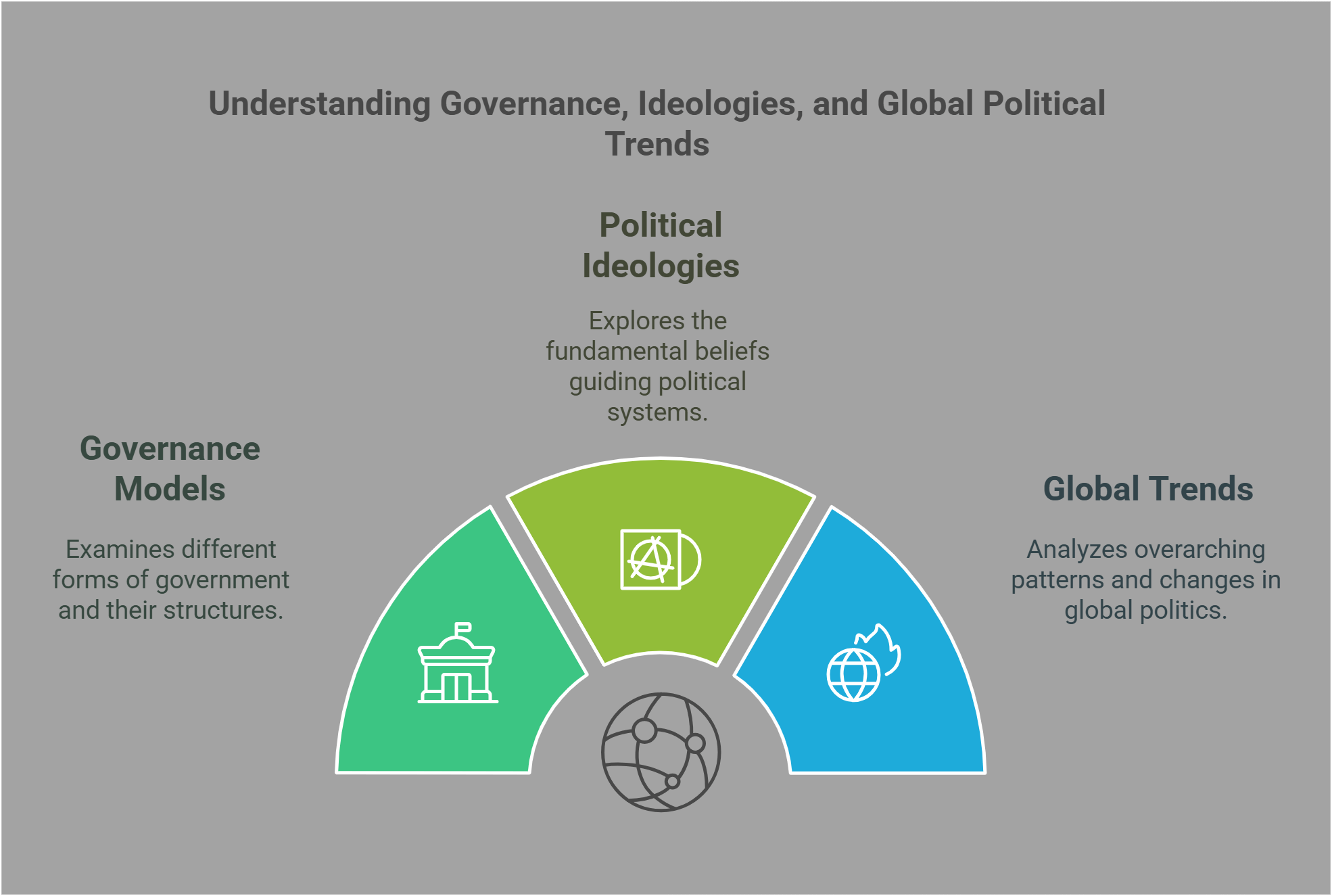
📋 Key Concepts
This guide explores the following essential concepts in comparative political systems:
- Federalism vs. Unitarism
- Parliamentary vs. Presidential Systems
- Electoral Systems
- Direct vs. Representative Democracy
- Authoritarianism
- Populism
- Political Realism
- Political Liberalism
- Geopolitics
- Global Governance
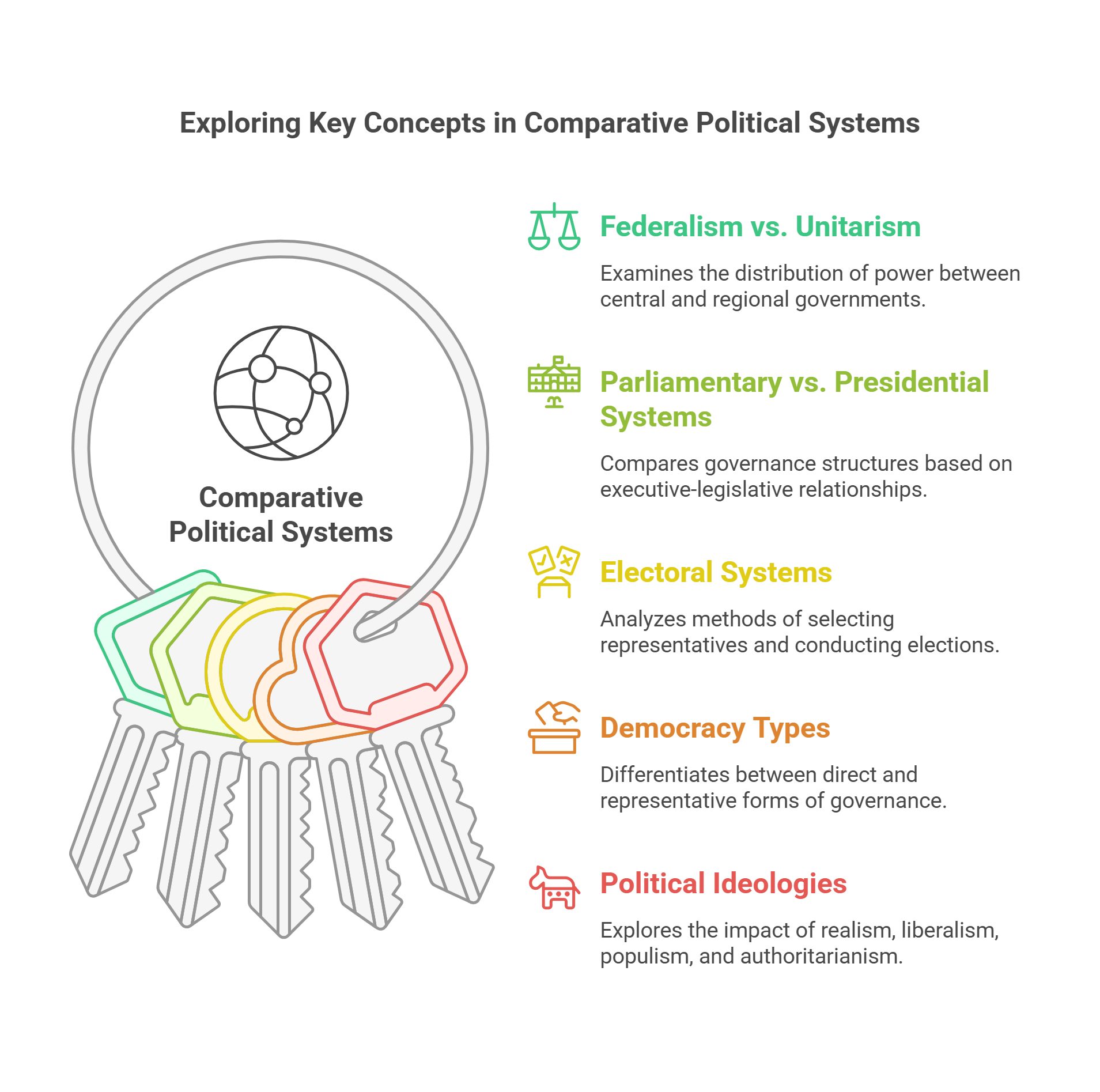
🔍 Detailed Explanations
1. Federalism vs. Unitarism
Federalism and unitarism are two contrasting systems of governance that differ in how power is distributed between central and regional authorities.
- Federalism:
- Power is constitutionally divided between a central government and subnational units (e.g., states, provinces).
- Examples: United States, India, Germany.
- Promotes regional autonomy and accommodates diversity.
- Unitarism:
- Power is concentrated in a central government, with limited or delegated authority to local units.
- Examples: France, Japan, China.
- Ensures uniform policies and national unity.
- Key Differences: Federalism fosters local governance and flexibility, while unitarism emphasizes centralized control.
Example: In the U.S., states can set their own education policies, while in France, national standards are enforced uniformly.
Explained Simply: Federalism is like dividing responsibilities in a team, while unitarism is like having one coach calling all the shots.
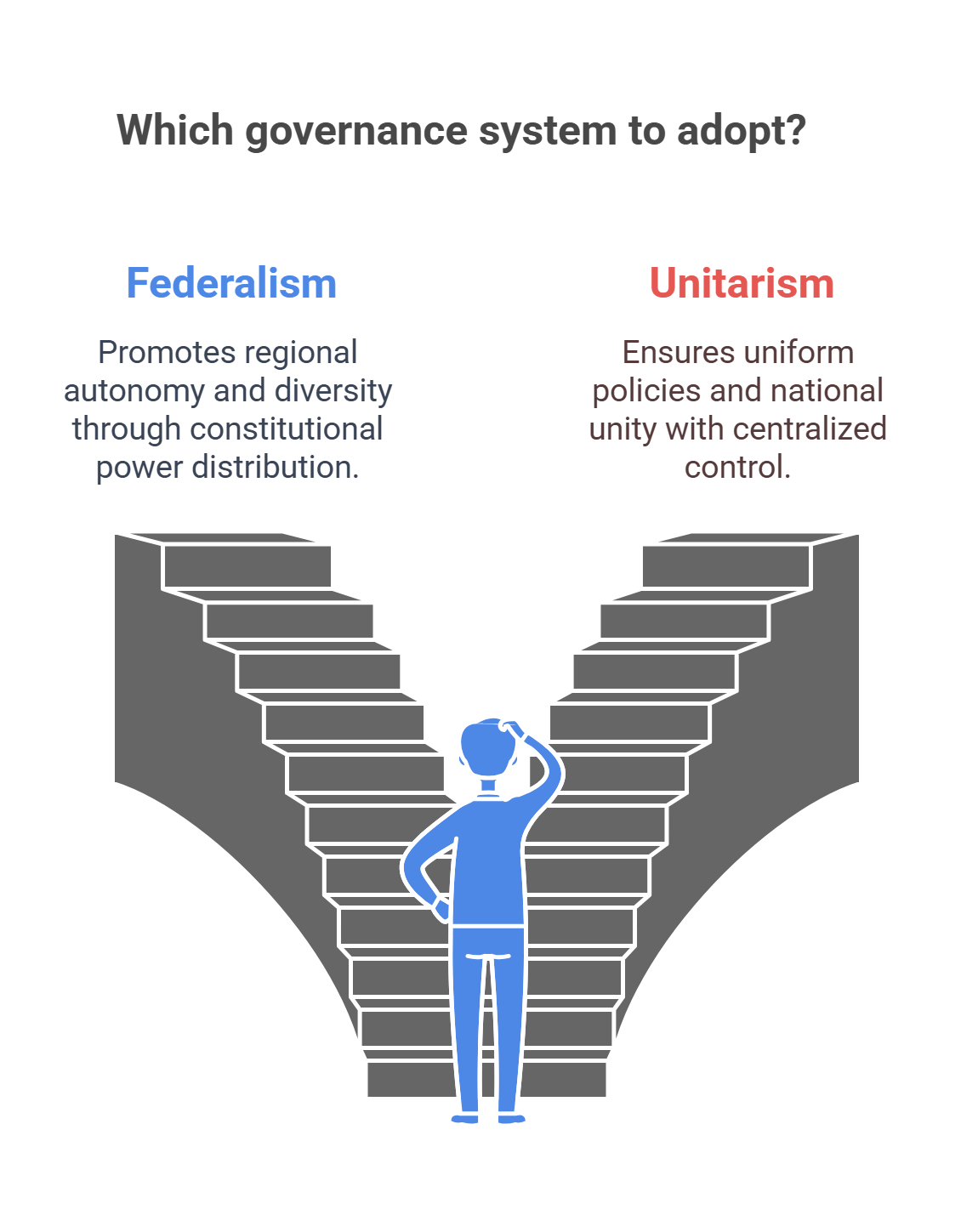
2. Parliamentary vs. Presidential Systems
Parliamentary and presidential systems define the relationship between the executive and legislative branches in a government.
- Parliamentary System:
- The executive (prime minister) is chosen by and accountable to the legislature.
- Promotes collaboration between branches but may lead to unstable coalitions.
- Examples: United Kingdom, Canada, India.
- Presidential System:
- The executive (president) is directly elected and operates independently of the legislature.
- Provides clear separation of powers but risks gridlock between branches.
- Examples: United States, Brazil, Nigeria.
- Key Differences: Parliamentary systems integrate executive and legislative functions, while presidential systems separate them.
Example: In the UK, the prime minister must maintain parliamentary support to govern, unlike the U.S. president.
Explained Simply: Parliamentary systems are like a team where leaders are chosen internally, while presidential systems are like electing a captain independently.
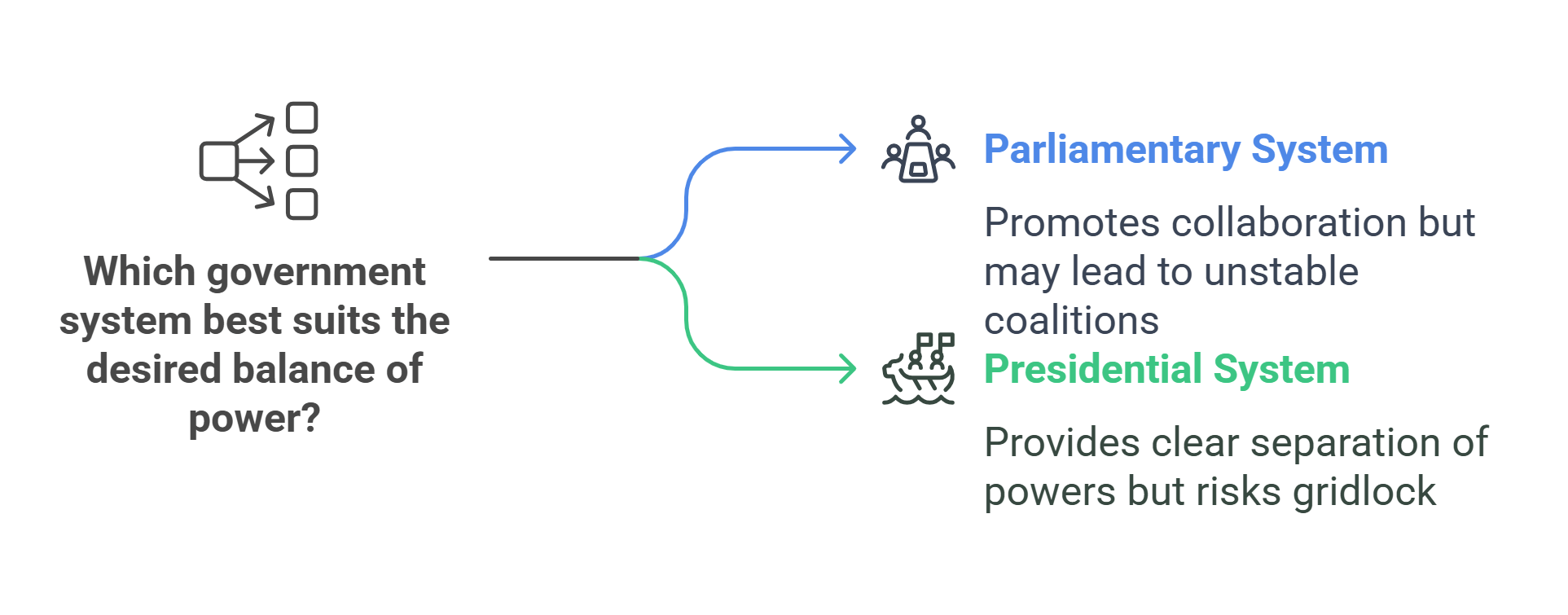
3. Electoral Systems
Electoral systems determine how votes are translated into political representation, influencing party dynamics and voter behavior.
- Types of Electoral Systems:
- First-Past-the-Post (FPTP): The candidate with the most votes wins (e.g., U.S., UK).
- Proportional Representation (PR): Seats are allocated based on the proportion of votes received (e.g., Israel, Netherlands).
- Mixed Systems: Combine FPTP and PR elements (e.g., Germany, Japan).
- Impact on Politics:
- FPTP tends to favor large parties and create stable majorities.
- PR fosters multi-party systems and ensures minority representation.
Example: India uses FPTP for national elections, while Germany’s Bundestag follows a mixed-member proportional system.
Explained Simply: Electoral systems are like different rules for dividing a pie—some give bigger slices to winners, others share more evenly.
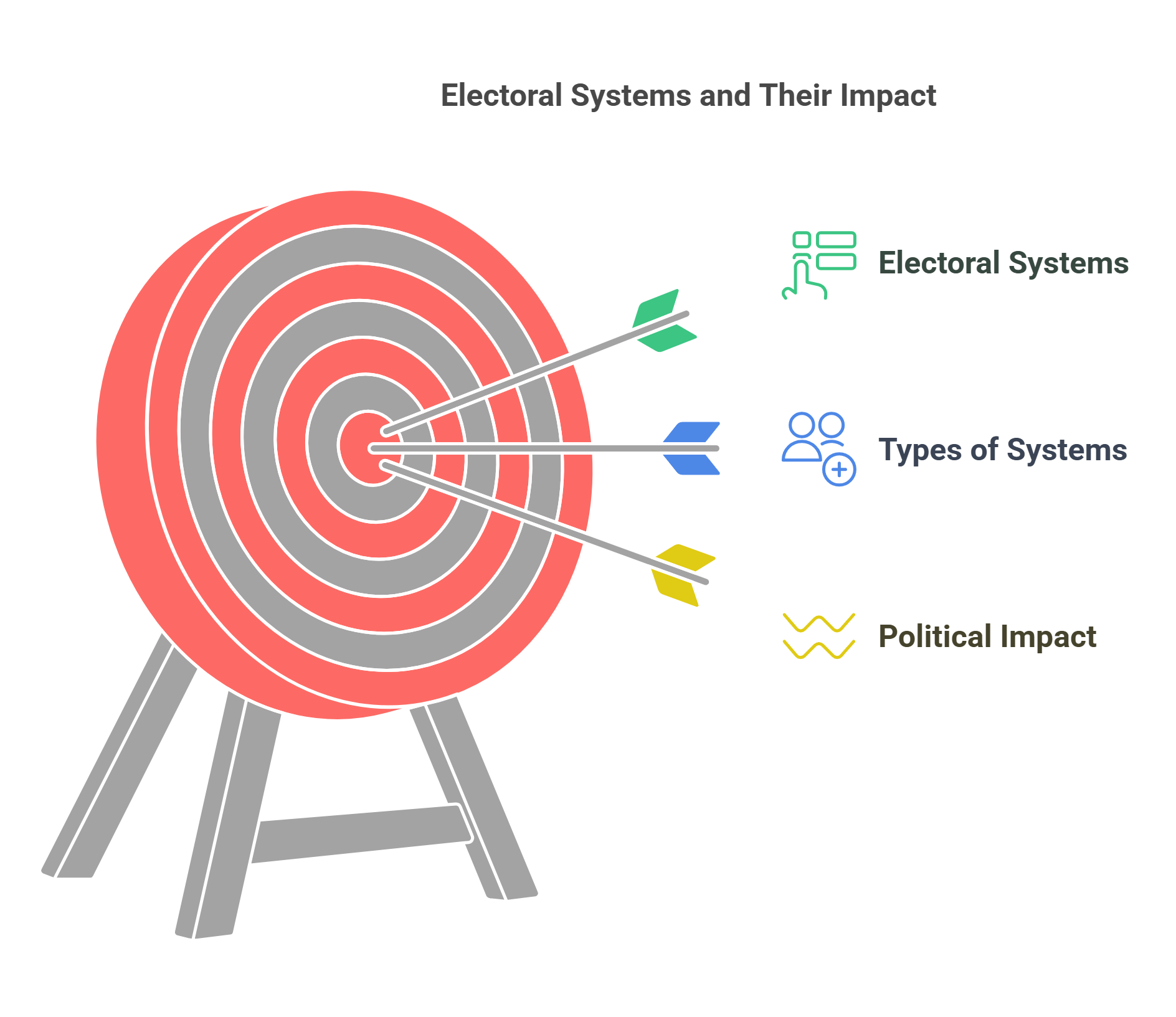
4. Direct vs. Representative Democracy
Direct and representative democracies define how citizens participate in governance and decision-making.
- Direct Democracy:
- Citizens vote directly on laws and policies.
- Examples: Ancient Athens, Swiss referenda.
- Works best in small, engaged communities.
- Representative Democracy:
- Citizens elect representatives to make decisions on their behalf.
- Examples: U.S., UK, India.
- Suitable for large, complex societies.
- Key Differences: Direct democracy emphasizes citizen involvement, while representative democracy focuses on delegation.
Example: California’s ballot initiatives are examples of direct democracy within a larger representative system.
Explained Simply: Direct democracy is like voting on every decision yourself, while representative democracy is like electing someone to vote for you.

5. Authoritarianism
Authoritarianism is a political system where power is concentrated in the hands of a single leader or a small group, often at the expense of individual freedoms and democratic norms.
- Characteristics:
- Limited political pluralism and restricted opposition.
- Centralized decision-making.
- Use of propaganda and censorship to maintain control.
- Types of Authoritarian Regimes:
- Military Regimes: Governed by the armed forces (e.g., Myanmar).
- Personalist Regimes: Dominated by a single leader (e.g., North Korea under Kim Jong-un).
- One-Party States: Power held by a single political party (e.g., China).
Example: In China, the Communist Party tightly controls governance, limiting political dissent.
Explained Simply: Authoritarianism is like a one-way street—power flows from the top down, with little input from citizens.

6. Populism
Populism is a political approach that seeks to appeal to the interests and emotions of ordinary people, often positioning “the people” against “the elite.” It can manifest across the political spectrum and is characterized more by style and rhetoric than by ideology.
- Core Features:
- Emphasis on direct connection between the leader and the public.
- Critique of established institutions, elites, and bureaucracies.
- Simplistic solutions to complex problems, often framed as common sense.
- Varieties of Populism:
- Right-Wing Populism: Focuses on nationalism and anti-immigration (e.g., Donald Trump in the U.S.).
- Left-Wing Populism: Emphasizes economic inequality and anti-corporate rhetoric (e.g., Hugo Chávez in Venezuela).
Impact on Politics:
- Can energize disengaged voters and challenge entrenched elites.
- Risks undermining democratic institutions and promoting polarization.
Explained Simply: Populism is like a megaphone for “the people,” often loud and polarizing in its pursuit of change.
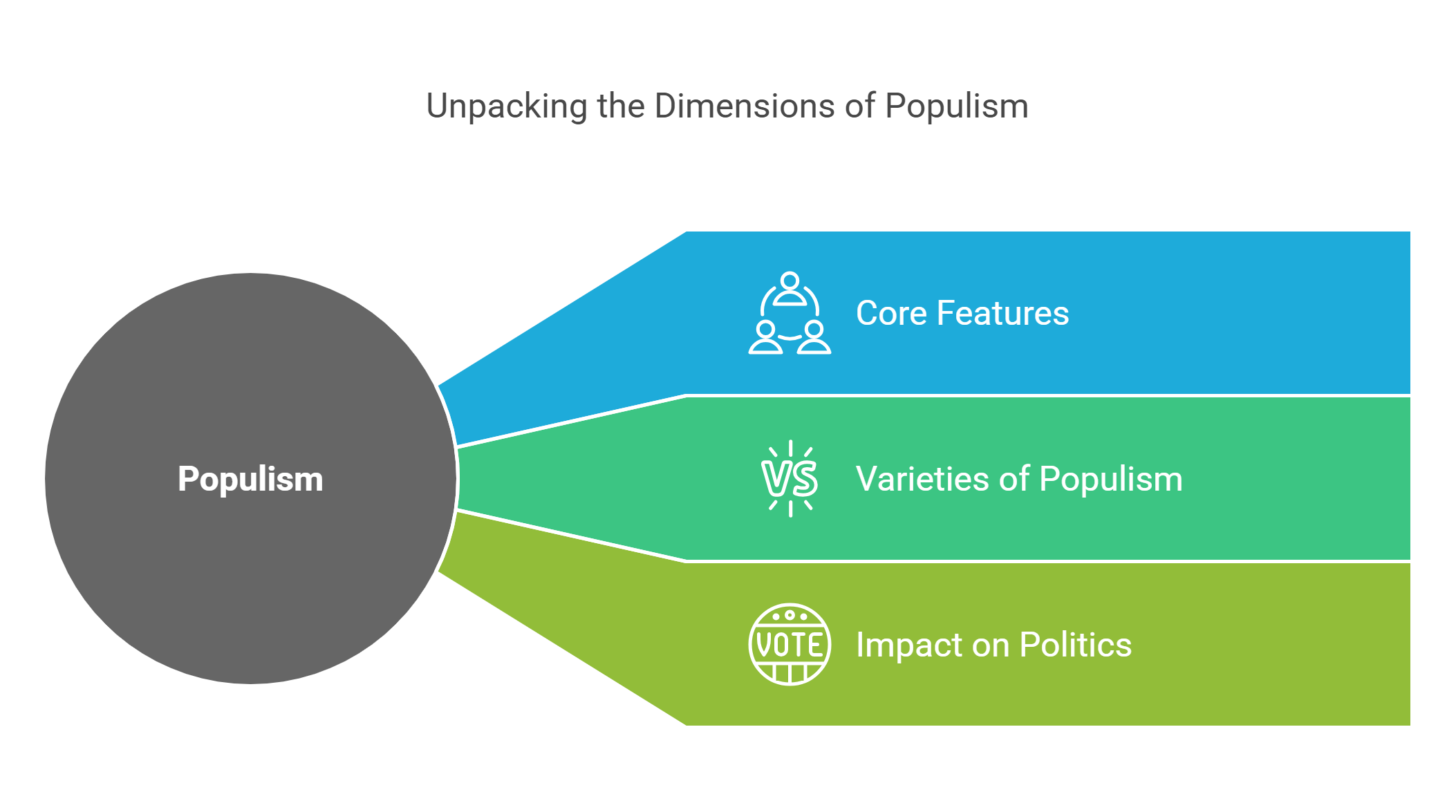
7. Political Realism
Political realism is a theoretical framework in international relations that emphasizes the pursuit of power and national interest over ideology or morality. It assumes that states operate in an anarchic international system where competition and survival are paramount.
- Key Principles:
- Power as Central: States prioritize military, economic, and political strength.
- Self-Help: States must rely on themselves for security.
- Pragmatism: Focus on practical outcomes over idealistic goals.
- Examples in Practice:
- The Cold War rivalry between the U.S. and the Soviet Union was driven by strategic calculations of power rather than ideological alignment.
Criticism: Overlooks the role of international cooperation and moral considerations.
Explained Simply: Political realism is like playing chess—strategic moves matter more than moral intentions.
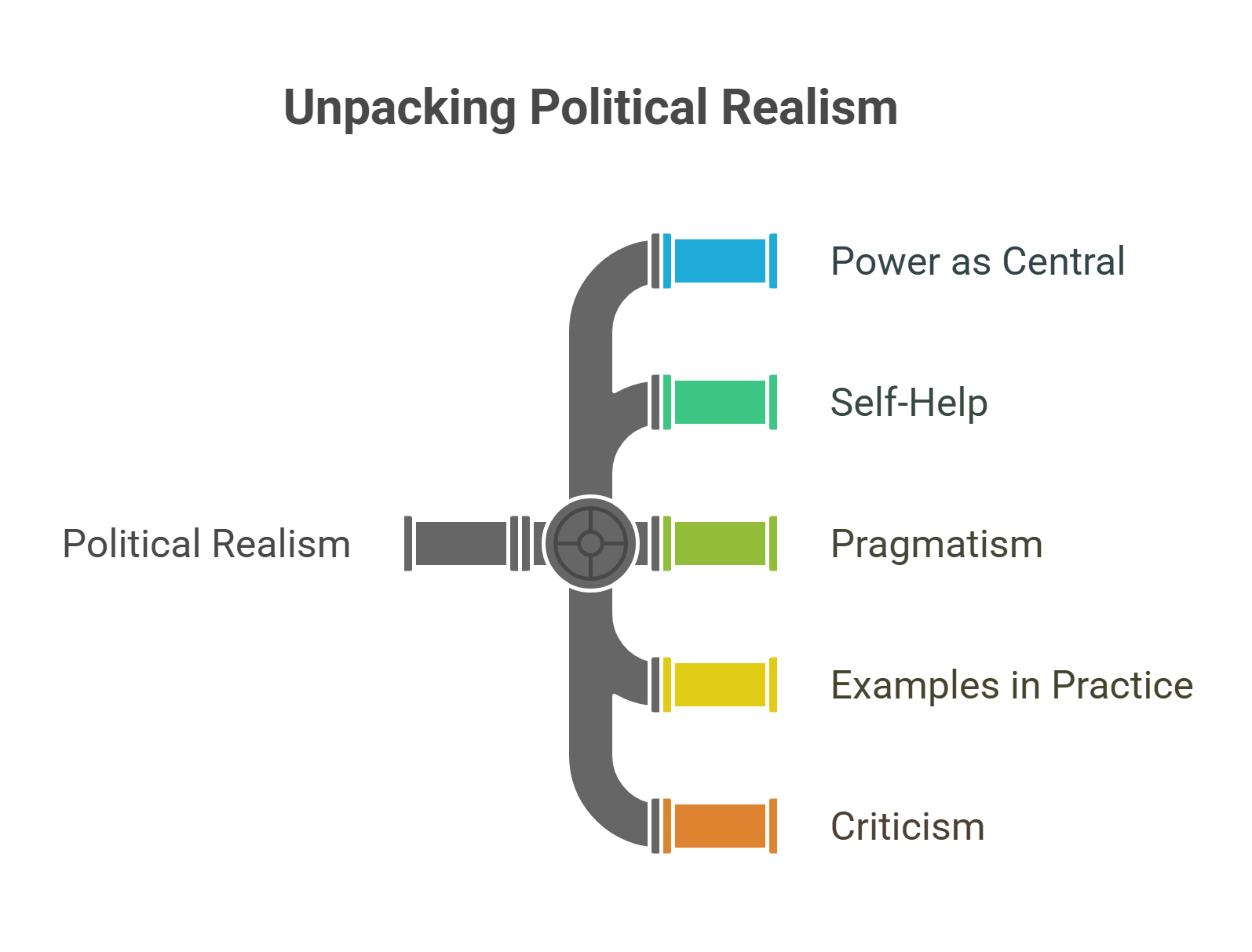
8. Political Liberalism
Political liberalism emphasizes individual rights, equality, and the rule of law as the foundation of governance. It seeks to protect personal freedoms while fostering pluralism and democratic participation.
- Core Values:
- Individual Freedom: Freedom of speech, religion, and association.
- Equality: Equal treatment under the law.
- Constitutional Governance: Limits on power to prevent authoritarianism.
- Historical Context: Political liberalism emerged during the Enlightenment, influencing revolutions like the American and French revolutions.
Modern Examples: Liberal democracies like the U.S., Canada, and many European nations prioritize free markets, civil liberties, and representative governance.
Explained Simply: Political liberalism is like giving everyone a seat at the table, ensuring fairness and freedom for all participants.
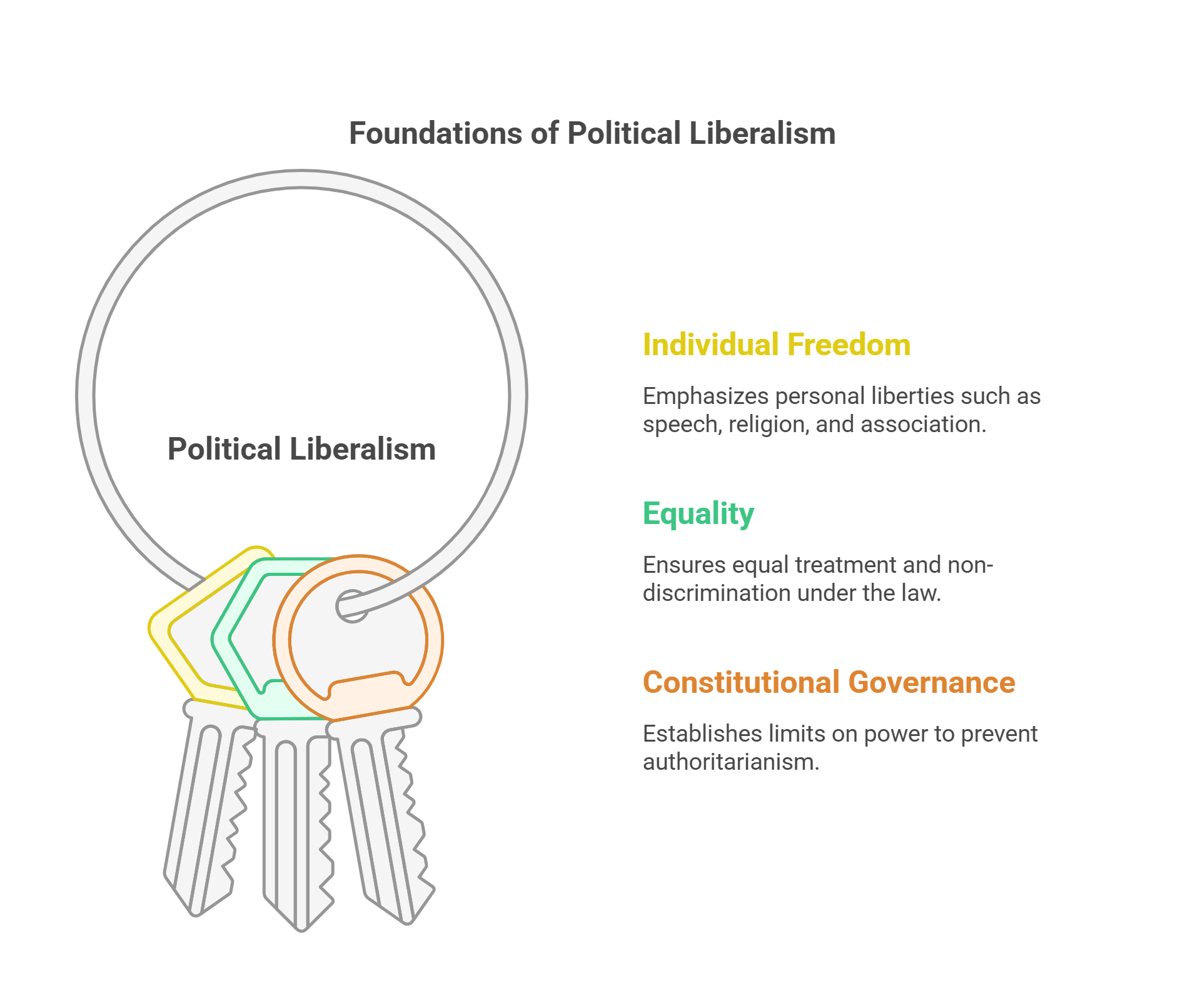
9. Geopolitics
Geopolitics examines how geography, economics, and political power intersect to shape global relations. It emphasizes the strategic importance of locations, resources, and alliances in determining a state’s influence and security.
- Key Factors in Geopolitics:
- Territory: Control over strategic regions like the South China Sea.
- Resources: Competition for oil, gas, and rare minerals.
- Military Positioning: Use of bases and alliances to project power.
- Modern Geopolitical Trends:
- The rise of China as a global power has reshaped alliances and economic dependencies.
- Climate change is influencing geopolitics through resource scarcity and migration.
Example: Russia’s annexation of Crimea in 2014 was driven by its geopolitical importance as a strategic port on the Black Sea.
Explained Simply: Geopolitics is like a global chessboard where geography determines the moves and strategies of nations.
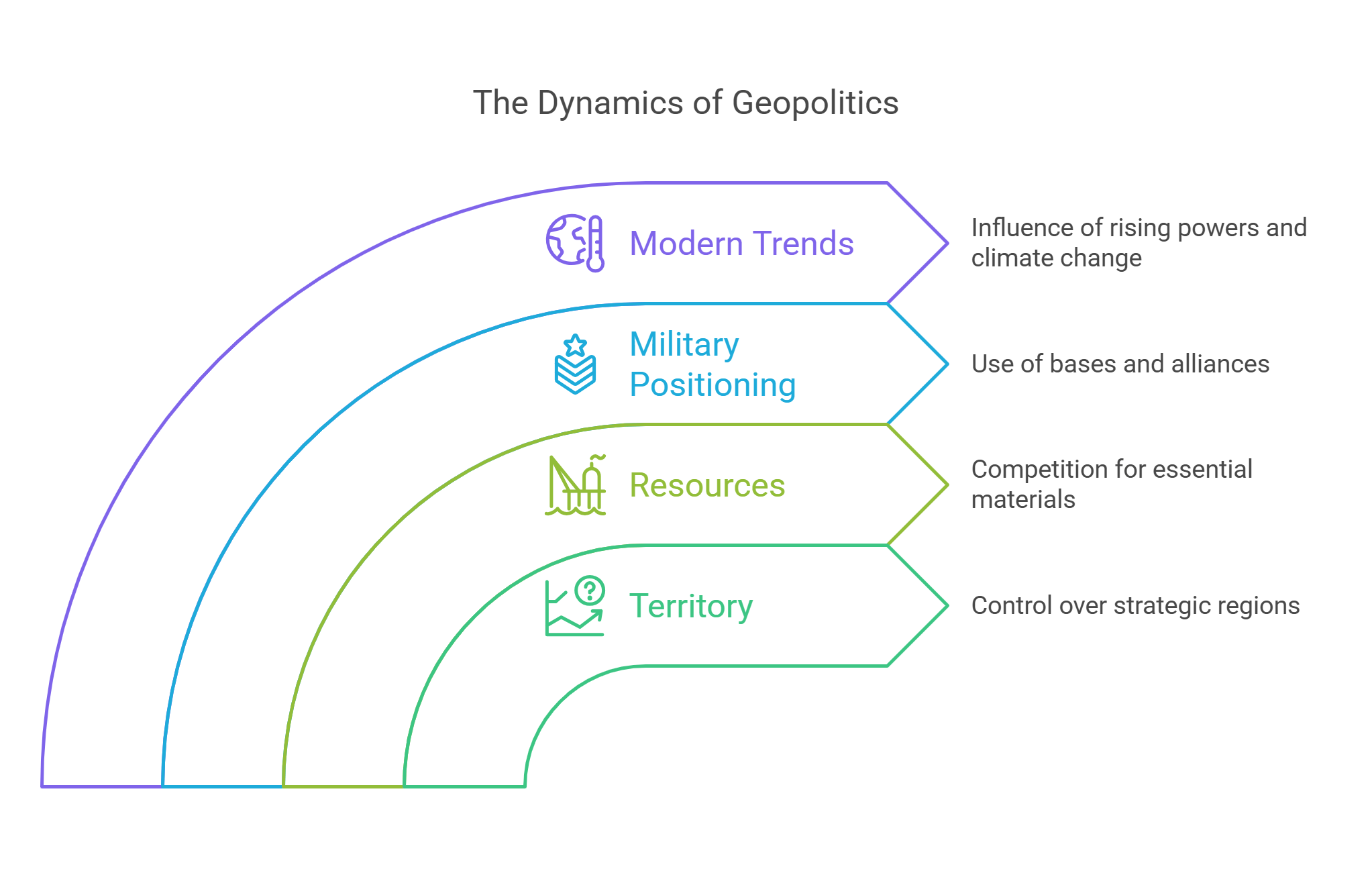
10. Global Governance
Global governance refers to the coordination of international efforts to address global challenges, such as climate change, security, and economic inequality. It relies on cooperation among states, international organizations, and non-state actors.
- Key Institutions:
- United Nations (UN): Promotes peace, development, and human rights.
- World Trade Organization (WTO): Regulates global trade to ensure fairness.
- Paris Agreement: A global pact to combat climate change.
- Challenges:
- Balancing national sovereignty with global cooperation.
- Addressing inequalities between developed and developing nations in decision-making processes.
Example: The COVID-19 pandemic highlighted the need for coordinated global responses to health crises through organizations like the WHO.
Explained Simply: Global governance is like a team of referees managing a game with players from around the world, ensuring fairness and tackling shared problems.
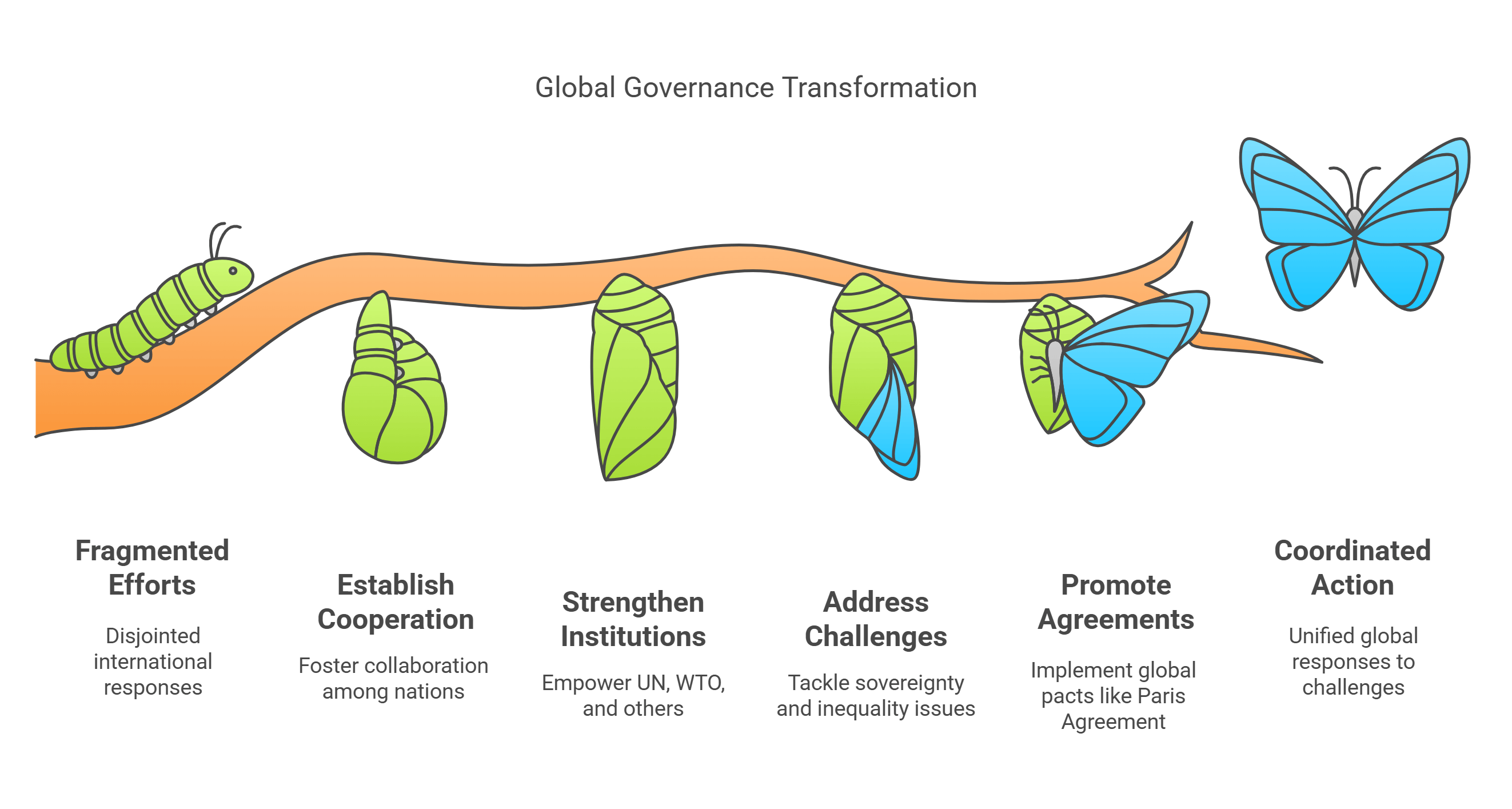
✨ Conclusion
Comparative political systems provide a framework for understanding how power is distributed, exercised, and contested across the globe. By exploring concepts like federalism, populism, and global governance, readers can critically analyze RC passages and gain insights into the mechanisms that shape societies and international relations.










